In today’s digital age, having a well-designed host website is crucial for the success of your Airbnb business. A host website serves as the online face of your property and can greatly impact the number of guests you attract and the bookings you receive. A well-designed website not only showcases your property in the best light but also creates a professional and trustworthy online presence. In this article, we will explore the importance of a well-designed host website for your Airbnb business and provide tips and tricks on how to create an effective and user-friendly website that will help you stand out from the competition.
The Importance of a Well-Designed Host Website for Your Airbnb Business
A well-designed host website can make a significant difference in attracting more guests and increasing bookings for your Airbnb business. When potential guests are searching for accommodations, they often visit multiple websites to compare options. A visually appealing and user-friendly website can capture their attention and make them more likely to choose your property over others.
Furthermore, a well-designed website creates a professional and trustworthy online presence. It gives potential guests confidence in booking with you, as they can see that you take your business seriously and have invested time and effort into creating a high-quality online platform. A poorly designed or outdated website, on the other hand, can give the impression that you are not attentive to detail or that your property may not meet their expectations.
Understanding Your Target Audience: How to Cater to Your Guests’ Needs
Understanding your target audience is essential when designing your host website. By knowing who your ideal guests are and what they are looking for in accommodations, you can tailor your website design and content to cater to their needs.
Start by conducting market research to identify your target audience’s demographics, preferences, and interests. This information will help you determine the design elements, colors, and imagery that will resonate with them. For example, if your target audience consists of young professionals, you may want to use a modern and sleek design with vibrant colors. If your target audience is families, you may want to use warm and inviting colors with images of children playing.
Additionally, consider the needs and desires of your target audience when creating your website content. Highlight the features and amenities that are most important to them, such as a fully equipped kitchen, a swimming pool, or a pet-friendly policy. Use language that speaks directly to your target audience and addresses their concerns or desires. By understanding your guests’ needs and tailoring your website accordingly, you can create a more personalized and engaging experience for potential guests.
Creating a User-Friendly Host Website: Tips and Tricks
Creating a user-friendly host website is essential for providing a positive experience for your website visitors. A user-friendly website is easy to navigate, loads quickly, and is optimized for mobile devices. Here are some practical tips on how to create a user-friendly host website:
1. Optimize website speed: Slow-loading websites can be frustrating for visitors and may cause them to leave before exploring further. Optimize your website’s speed by compressing images, minimizing the use of plugins, and using caching techniques.
2. Ensure mobile responsiveness: With the increasing use of smartphones and tablets, it is crucial that your website is mobile-friendly. Test your website on different devices to ensure that it displays properly and is easy to navigate on smaller screens.
3. Use clear navigation: Make it easy for visitors to find what they are looking for by using clear and intuitive navigation menus. Use descriptive labels for each menu item and organize your content in a logical manner.
4. Provide contact information: Make it easy for potential guests to get in touch with you by prominently displaying your contact information on your website. Include your phone number, email address, and social media profiles.
By implementing these tips, you can create a user-friendly host website that will enhance the overall experience for your website visitors and increase the likelihood of bookings.
The Power of Visuals: How to Use Photos and Videos to Showcase Your Airbnb
Visuals play a crucial role in capturing the attention of your website visitors and showcasing the unique features of your Airbnb. High-quality photos and videos can make a big impact on potential guests and help them visualize themselves staying at your property. Here are some tips on how to use visuals effectively on your host website:
1. Hire a professional photographer: Investing in professional photography is worth every penny. A professional photographer will know how to capture your property in the best light, highlighting its unique features and creating visually appealing images that will attract potential guests.
2. Stage your property: Before taking photos, make sure your property is clean, tidy, and well-staged. Remove any clutter, add fresh flowers or plants, and make sure all lights are turned on to create a warm and inviting atmosphere.
3. Use a variety of photos: Include a variety of photos that showcase different areas of your property, such as the bedrooms, living room, kitchen, and outdoor spaces. Show off any unique features or amenities that set your property apart from others.
4. Create a virtual tour: Consider creating a virtual tour or video walkthrough of your property. This allows potential guests to get a better sense of the layout and flow of your Airbnb, giving them a more immersive experience.
By using high-quality photos and videos on your host website, you can make a strong visual impact on potential guests and increase their desire to book with you.
Crafting Compelling Copy: Writing a Captivating Description of Your Airbnb
In addition to visuals, well-written copy is essential for attracting guests to your Airbnb. A captivating description can paint a picture in the minds of potential guests and entice them to book with you. Here are some tips on how to write a compelling description of your Airbnb:
1. Highlight unique features: Identify the unique features or amenities of your property and highlight them in your description. Whether it’s a stunning view, a cozy fireplace, or a private garden, make sure to emphasize what sets your Airbnb apart from others.
2. Use descriptive language: Use descriptive language to create a vivid image in the minds of potential guests. Instead of simply stating that your property has a pool, describe it as a “sparkling oasis perfect for cooling off on hot summer days.”
3. Address potential concerns: Anticipate any concerns or questions that potential guests may have and address them in your description. For example, if your property is located near a busy street, you can mention that the windows are soundproofed to ensure a peaceful stay.
4. Include testimonials or reviews: If you have received positive reviews from previous guests, include excerpts or testimonials in your description. This adds credibility and social proof to your listing, making potential guests more likely to trust and book with you.
By crafting a compelling description of your Airbnb, you can capture the attention of potential guests and persuade them to choose your property over others.
The Dos and Don’ts of Website Navigation: How to Make It Easy for Guests to Find What They Need
Website navigation plays a crucial role in providing a positive user experience for your website visitors. A well-designed navigation menu makes it easy for guests to find the information they are looking for and encourages them to explore further. Here are some practical tips on how to make your website navigation easy and intuitive:
1. Keep it simple: Avoid cluttering your navigation menu with too many options. Stick to the essential pages, such as Home, About, Accommodations, Amenities, Gallery, Reviews, and Contact. If you have additional pages or sections, consider using drop-down menus or submenus to organize the content.
2. Use descriptive labels: Use clear and descriptive labels for each menu item. Avoid using jargon or industry-specific terms that may confuse your website visitors. For example, instead of using “Our Properties,” use “Accommodations” or “Rooms.”
3. Include a search bar: If your website has a lot of content or if you offer multiple properties, consider including a search bar to make it easier for visitors to find what they are looking for. This can be especially helpful for guests who have specific criteria or preferences.
4. Test your navigation: Test your website navigation on different devices and browsers to ensure that it works properly and is easy to use. Ask friends or family members to navigate your website and provide feedback on any areas that may be confusing or difficult to find.
By following these dos and don’ts of website navigation, you can create an intuitive and user-friendly experience for your website visitors, increasing the likelihood of bookings.
Integrating Your Airbnb Calendar: Keeping Your Availability Up-to-Date
Keeping your availability up-to-date is crucial for managing bookings and avoiding double bookings. Integrating your Airbnb calendar with your host website can streamline the booking process and provide potential guests with real-time availability information. Here are some tips on how to integrate your Airbnb calendar with your host website:
1. Use a booking widget: Many website builders and hosting platforms offer booking widgets that allow you to display your Airbnb calendar on your host website. These widgets automatically sync with your Airbnb calendar, ensuring that the availability information is always up-to-date.
2. Provide clear instructions: If you choose to integrate your Airbnb calendar, make sure to provide clear instructions on how potential guests can book directly through your website. Include a call-to-action button or link that takes them to the booking page.
3. Update availability promptly: Whenever you receive a booking through your host website or Airbnb, make sure to update the availability on both platforms promptly. This will prevent double bookings and ensure that potential guests have accurate information when making a booking.
By integrating your Airbnb calendar with your host website, you can provide potential guests with real-time availability information and streamline the booking process, increasing the likelihood of bookings.
Managing Guest Reviews: How to Display Them on Your Host Website
Displaying guest reviews on your host website is an effective way to build trust and credibility with potential guests. Positive reviews can reassure potential guests that your property is as advertised and that previous guests have had a positive experience staying with you. Here are some tips on how to manage guest reviews and display them effectively on your website:
1. Encourage guests to leave reviews: After each guest’s stay, send them a follow-up email thanking them for choosing your property and kindly ask them to leave a review. Make it easy for guests to leave reviews by providing a direct link or instructions on how to do so.
2. Respond to reviews: Take the time to respond to each guest review, whether positive or negative. Thank guests for their feedback and address any concerns or issues raised in a professional and courteous manner. This shows potential guests that you value feedback and are committed to providing a positive experience.
3. Display reviews prominently: Display guest reviews prominently on your host website, preferably on the homepage or a dedicated testimonials page. Use a visually appealing layout that showcases the review excerpts along with the guest’s name and photo (with their permission). This adds credibility and authenticity to the reviews.
4. Use a review widget: Consider using a review widget that automatically pulls in reviews from platforms like Airbnb, Google, or TripAdvisor. These widgets can be easily integrated into your host website and provide potential guests with a comprehensive view of previous guests’ experiences.
By managing guest reviews effectively and displaying them prominently on your host website, you can build trust and credibility with potential guests, increasing the likelihood of bookings.
Incorporating Social Proof: Using Testimonials and Feedback to Boost Your Credibility
Social proof is a powerful tool for building credibility and trust with potential guests. Testimonials and feedback from previous guests can reassure potential guests that your property is as advertised and that they will have a positive experience staying with you. Here are some tips on how to incorporate social proof into your host website:
1. Request testimonials: Reach out to previous guests and kindly request their permission to use their feedback as testimonials on your website. Ask them to provide specific details about their experience, such as what they enjoyed most about their stay or how your property exceeded their expectations.
2. Use guest feedback: In addition to formal testimonials, consider using guest feedback or comments from review platforms like Airbnb, Google, or TripAdvisor. Include excerpts from positive reviews that highlight the unique features or amenities of your property.
3. Include guest photos: If guests provide their permission, include their photos alongside their testimonials or feedback. This adds authenticity and credibility to the social proof, as potential guests can see that real people have had positive experiences staying with you.
4. Update social media profiles: Make sure your social media profiles are up-to-date and active. Potential guests often check social media platforms to get a sense of your property’s reputation and engagement with previous guests.
By incorporating social proof into your host website, you can build credibility and trust with potential guests, increasing the likelihood of bookings.
Maximizing Your SEO: Tips for Optimizing Your Host Website for Search Engines
Optimizing your host website for search engines is crucial for increasing its visibility and attracting organic traffic. Search engine optimization (SEO) involves optimizing various elements of your website to improve its ranking in search engine results pages (SERPs). Here are some practical tips on how to improve your website’s SEO:
1. Conduct keyword research: Identify relevant keywords that potential guests may use when searching for accommodations in your area. Use keyword research tools to determine the search volume and competition for each keyword. Incorporate these keywords naturally into your website content, including headings, titles, and meta descriptions.
2. Optimize page titles and meta descriptions: Page titles and meta descriptions are the snippets that appear in search engine results. Make sure each page on your website has a unique and descriptive title and meta description that includes relevant keywords. This will help search engines understand the content of your pages and improve their visibility in SERPs.
3. Create high-quality content: Regularly update your website with high-quality, informative, and engaging content. This can include blog posts, neighborhood guides, or travel tips related to your area. Use relevant keywords naturally throughout your content to improve its visibility in search engine results.
4. Build backlinks: Backlinks are links from other websites that point to your website. They are an important factor in search engine rankings. Reach out to relevant websites or bloggers in your industry and ask if they would be interested in featuring your property or writing a guest post on their blog. This can help you build backlinks and increase your website’s authority.
By implementing these SEO tips, you can improve your website’s visibility in search engine results and attract more organic traffic, increasing the likelihood of bookings.
Staying Ahead of the Competition: Using Analytics to Track Your Website’s Performance
Tracking your website’s performance is essential for staying ahead of the competition and making data-driven decisions to improve your online presence. Website analytics provide valuable insights into how visitors interact with your website, including metrics such as the number of visitors, their demographics, the pages they visit, and the actions they take. By analyzing this data, you can identify trends, patterns, and areas for improvement. For example, if you notice a high bounce rate on a particular page, you can investigate why visitors are leaving and make changes to improve engagement. Additionally, analytics can help you track the success of marketing campaigns, measure conversion rates, and identify opportunities for optimization. By regularly monitoring and analyzing your website’s performance, you can make informed decisions to enhance user experience, increase traffic, and ultimately outperform your competition.






